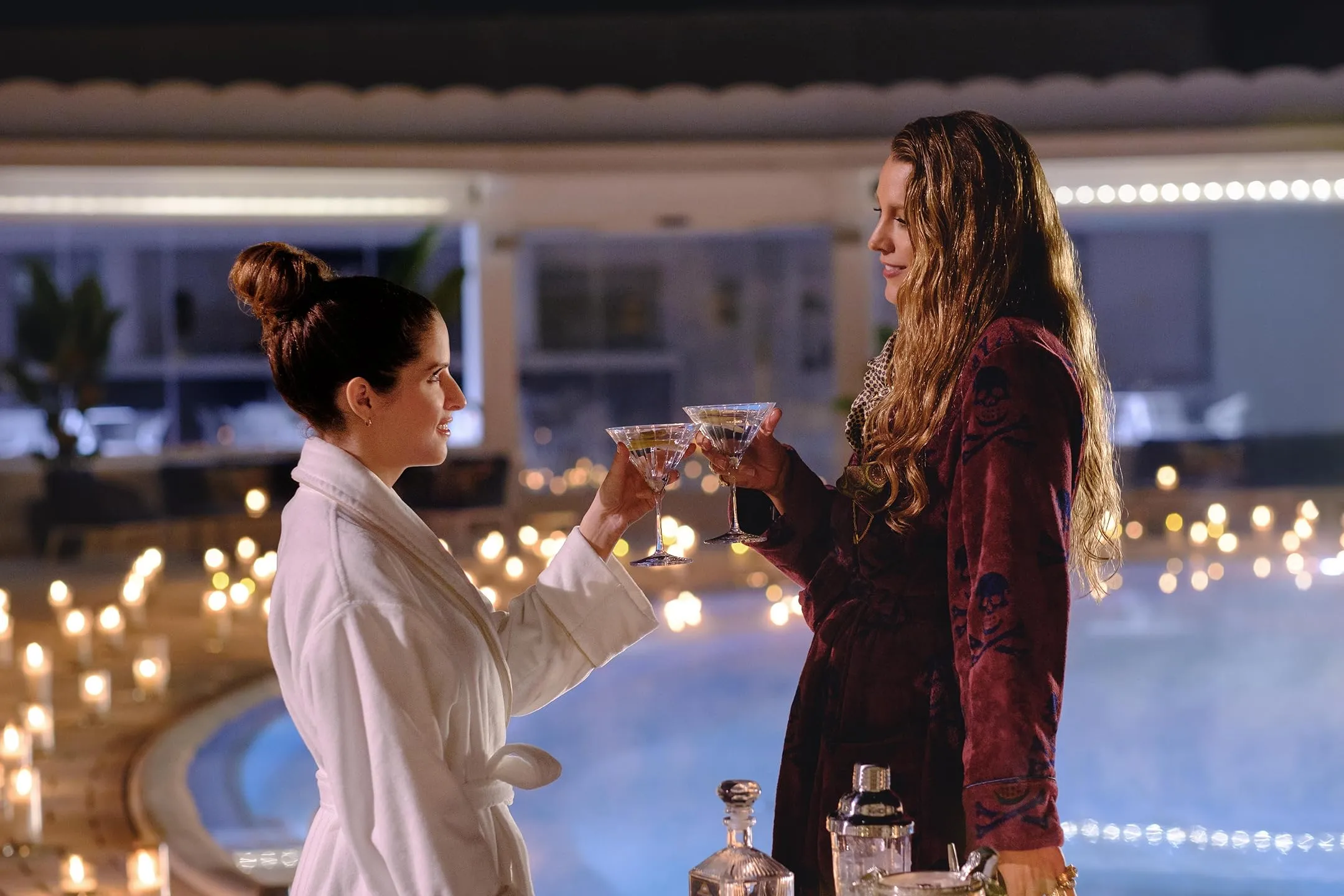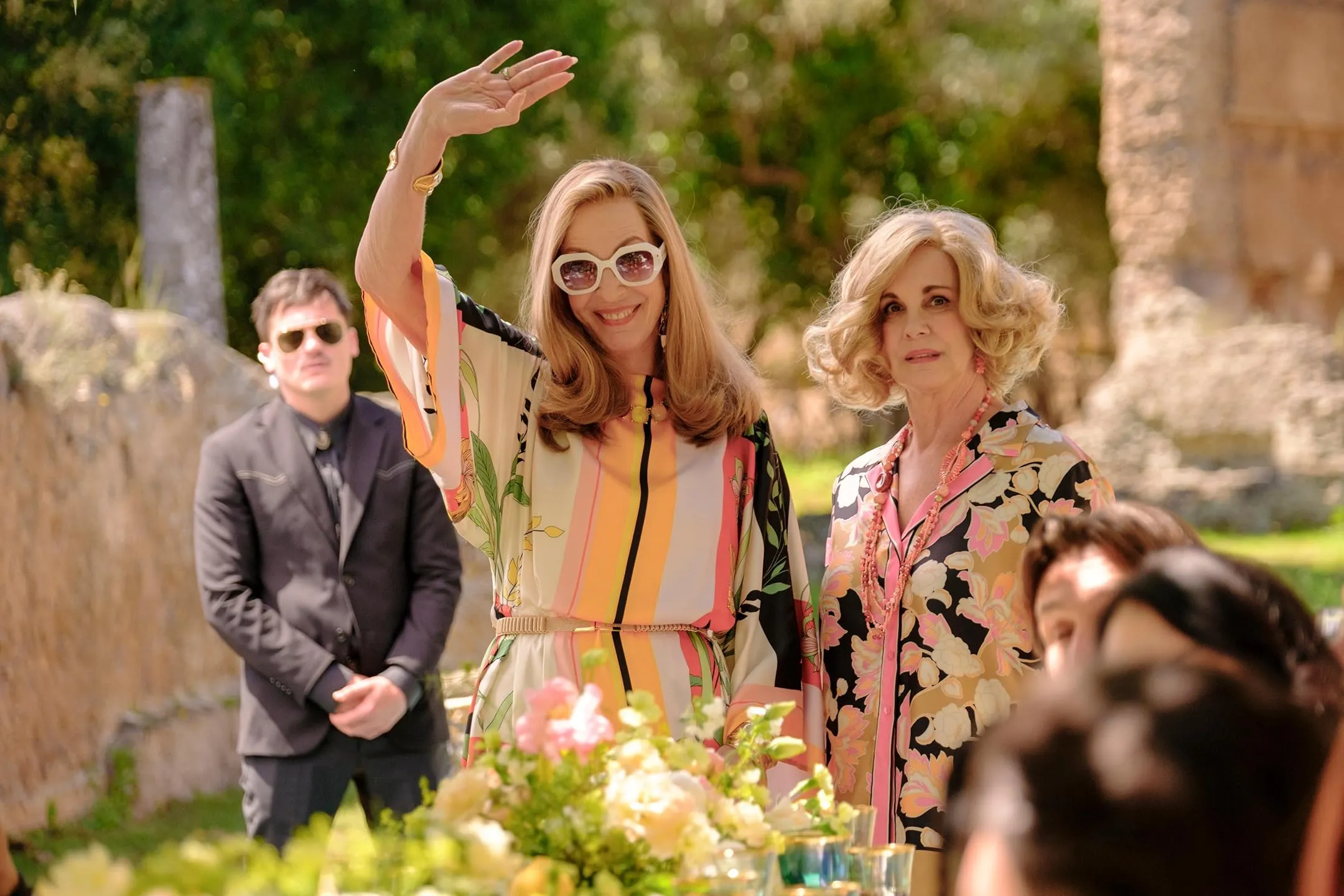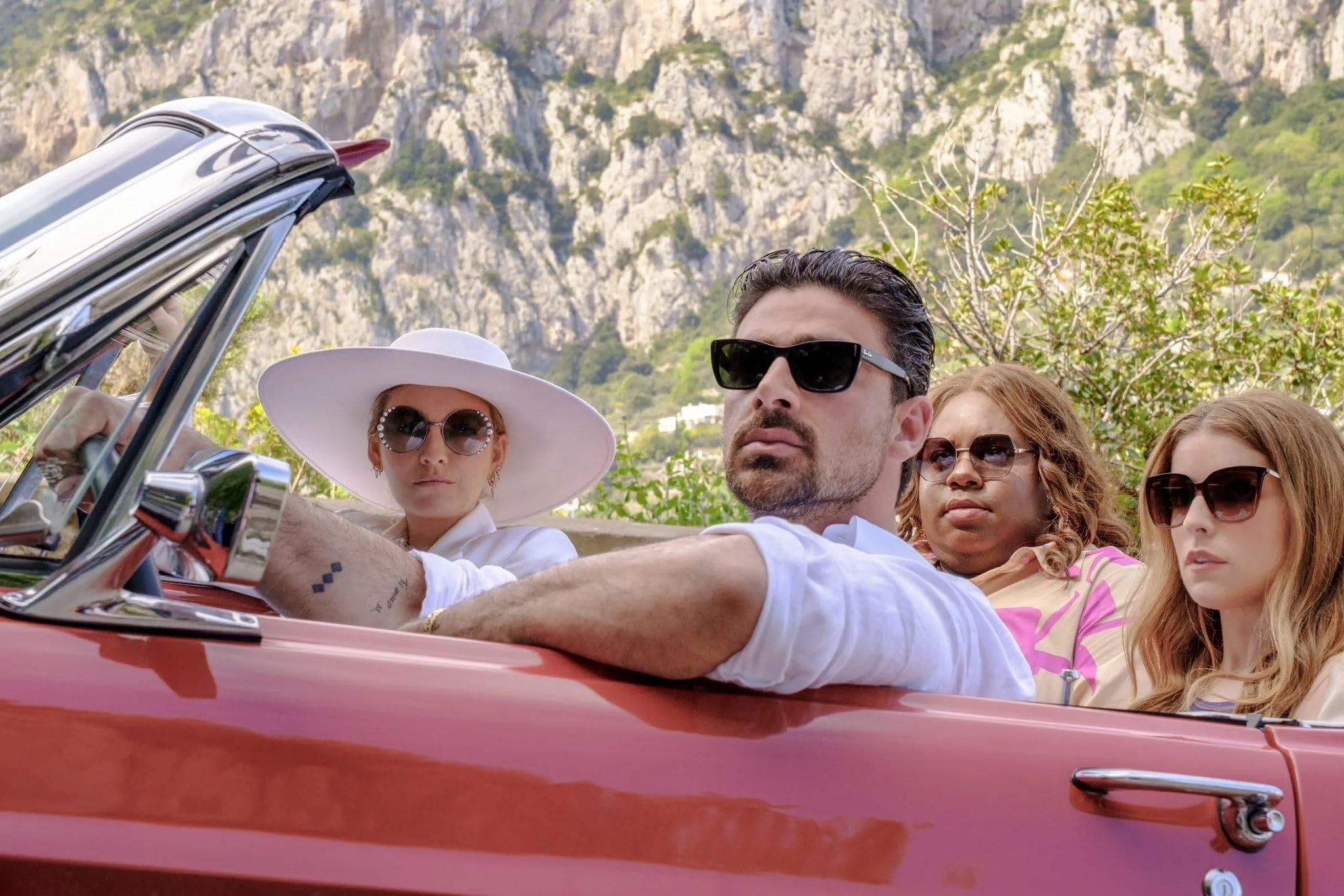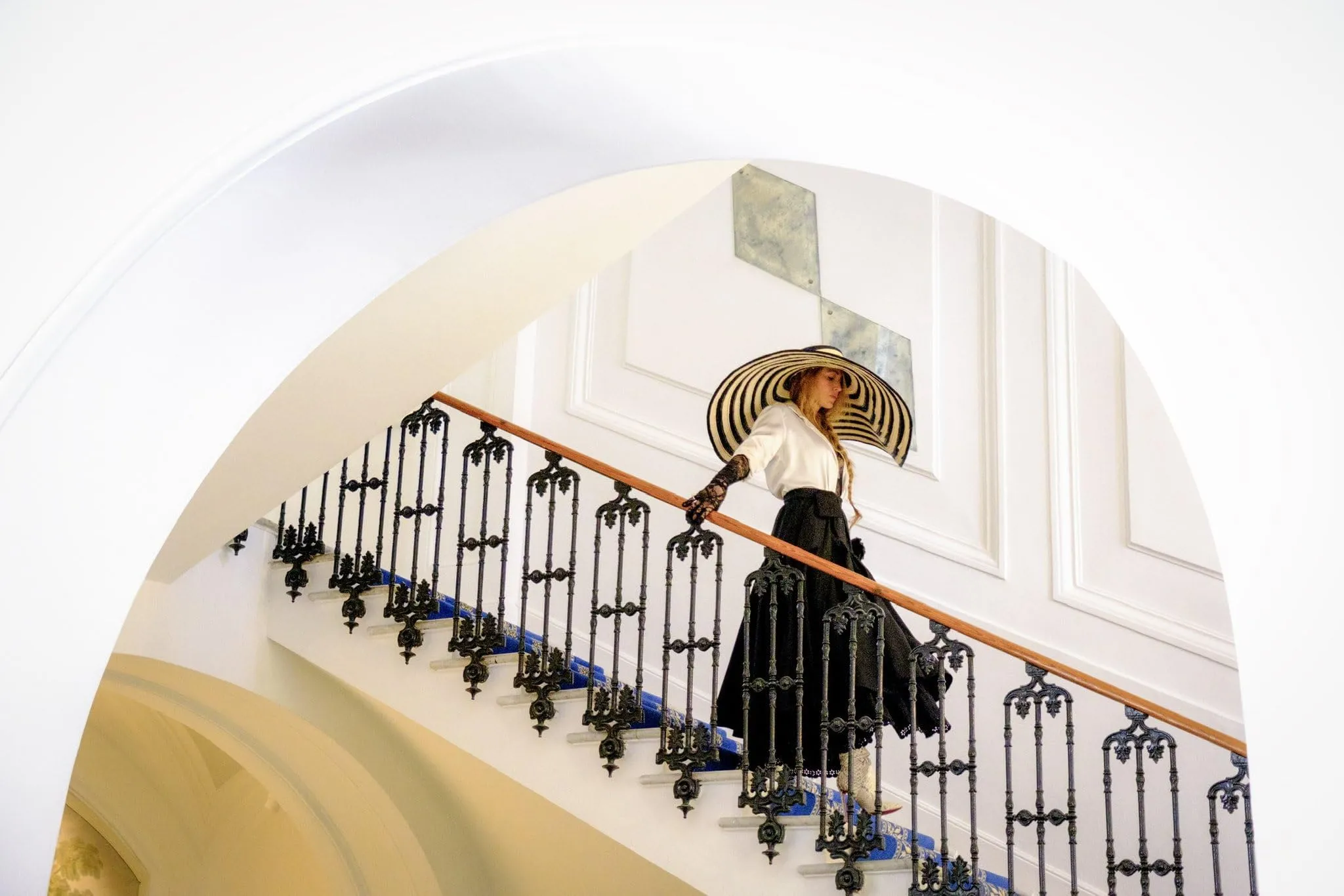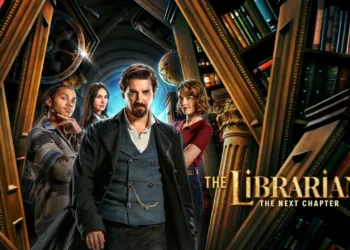Two women, both dazzling and unpredictable, meet again under the sunny skies of Capri. The film brings together Stephanie—a reserved but determined author—and Emily, whose charm masks a knack for stirring trouble.
Their reunion is set against a glamorous background, where lavish parties and scenic vistas serve as a stage for an encounter filled with twists and playful deceit.
This work mixes elements of dark humor with a classic mystery and a touch of absurdity. The tone remains self-aware and cheeky, offering a nod to familiar tropes while keeping the viewer on their toes.
The story unfolds as both characters navigate a world of high-stake secrets and unexpected turns, all set within an environment that gleams with style and an undercurrent of mischief.
Narrative Structure and Plot Complexity
The film opens with a simple call to Capri that quickly transforms into a cascade of unforeseen complications. Stephanie’s reluctant departure, triggered by an unexpected invitation from Emily, sets off a chain reaction of intersecting plotlines.
The wedding serves as a gateway into a tangled narrative, where past misdeeds, concealed family secrets, and unforeseen alliances mingle in a manner that challenges the viewer’s expectations.
Multiple narrative threads unfold simultaneously, each offering its own set of surprises and deceptive hints. A succession of startling developments and misleading cues creates a sense of constant unpredictability. The story arranges a series of flashbacks that shift the timeline abruptly, adding layers that require the viewer to piece together disparate elements of character histories and hidden motives.
The film’s narrative ambition stands as both its strong suit and a source of occasional disarray. The intricate plotting injects a lively energy into the experience, yet at times, the rapid-fire twists can render the storyline slightly disjointed. This technique of cramming several surprising revelations into one event creates moments where the plot seems to struggle to maintain a coherent thread.
The measured pace allows for moments of tension to intersperse with bursts of unrestrained absurdity, ensuring that the storytelling remains energetic, even if it sometimes overburdens the viewer with relentless surprises. Such a methodical, if occasionally overzealous, approach underscores the film’s desire to keep the audience guessing at every turn.
Character Dynamics and Performances
Stephanie and Emily form a dynamic pair whose long-standing history is woven into every scene. Their relationship carries a weight of shared secrets and shifting power, highlighted by moments of dry wit and unexpected vulnerability.
Stephanie’s cautious nature contrasts sharply with Emily’s daring charm, creating scenes charged with tension that shift seamlessly into humor. The chemistry between the two is a standout, with each interaction revealing layers of mutual dependence and hidden agendas.
Stephanie’s character undergoes a transformation that is both surprising and authentic. Initially portrayed as reserved and hesitant, her encounter with a chaotic environment forces her to rethink her identity. Emily, in contrast, remains an enigma; her blend of charm and cunning makes her unpredictable. She oscillates between mischief and a more vulnerable side that hints at past scars, adding a spark to her unpredictable persona.
The film also features a host of secondary figures who add depth to the central conflict. Dante, the mob heir with an air of mystery, injects moments of sly humor and tension. The disillusioned ex and assorted family members contribute brief yet memorable turns, enriching the tapestry of personal conflicts and alliances.
Each performance is marked by precise timing—subtle expressions and sharply written banter drive the narrative forward. The balance of understated physical comedy and moments of intense dramatic interplay enhances the film’s overall tone, giving weight to the interplay between levity and darker themes.
Themes, Motifs, and Underlying Commentary
The film presents motherhood and personal identity as central elements that color the narrative’s dark humor. Stephanie’s struggle with her public image versus her hidden vulnerabilities paints a picture of a woman forced to rethink her role amid societal pressures. Her transformation stands out as a portrait of a character caught between duty and desire, questioning the mask she wears for the world.
The complicated relationship between Stephanie and Emily serves as a core engine for the film’s narrative. Their long history, marked by loyalty mixed with self-interest, creates scenes that are both sharply funny and quietly reflective. Their interactions uncover layers of trust and treachery that keep the audience alert to every exchanged glance and offhand remark.
The work takes a satirical look at the opulent lifestyle of its setting. Capri is not just a scenic backdrop but a stage where the excesses and contradictions of wealth are laid bare. The film mocks the obsession with appearances and the pursuit of status, using humor to expose the superficial nature of a society that values image over substance.
Subtle references to current cultural habits, such as the influence of online personas and the allure of true-crime narratives, add a modern twist. The contrast between the natural charm of the island and the constructed glamour of its inhabitants highlights a disconnect that runs throughout the film. Each theme is layered with wit and a clear-eyed observation of how personal and cultural myths intersect on screen.
Visual Style and Production Design
Capri emerges as a striking backdrop, its sunlit shores and gentle hills setting a vivid scene that influences every frame. The island is treated as a living entity, its charm and character interwoven with the film’s narrative rhythm.
Sweeping drone shots capture expansive coastal vistas, while intimate close-ups reveal quiet moments of introspection, creating a visual conversation that underpins the unfolding drama.
Costume design draws clear distinctions between the protagonists. Emily appears in sharply tailored outfits that convey a sense of authority and refined sophistication. In contrast, Stephanie’s attire leans toward practical simplicity, mirroring her grounded nature and evolving journey.
These clothing choices serve as silent indicators of each character’s inner world and shifting dynamics, establishing a visual hierarchy that complements the storytelling.
The camera work is methodical, with carefully composed shots that exploit color variations and contrasts in lighting to set the mood. Detailed set pieces and luxurious interiors contribute texture and depth, reinforcing the film’s attention to craft.
Innovative techniques, such as low-angle perspectives and reflective surfaces, inject energy into key moments, ensuring that the visual presentation supports the narrative in a measured yet dynamic fashion.
Direction, Screenplay, and Dialogue
The director demonstrates a precise command over the visual and narrative aspects, blending grandiose scenes with intimate character moments. His approach allows humorous sequences to coexist with moments of tension and subtle emotional beats. This careful balance turns overt spectacles and quieter exchanges into parts of a cohesive experience, even when the film veers into unexpected territory.
The screenplay presents a brisk cadence, filled with rapid exchanges and surprising narrative twists that keep the audience alert. It employs a non-linear format with flashbacks that reveal hidden facets of the characters at well-timed intervals. The layering of these narrative elements creates a network of revelations that both entertain and provoke thought, although at times the rapid-fire unfolding can feel overly ambitious.
Dialogue stands out as a critical asset, with characters exchanging sharp, well-timed remarks that lighten the mood amid unfolding suspense. The script captures a wit that punctuates tense moments with a dry sense of humor. Pithy quips intersperse more reflective lines, offering moments where vulnerability surfaces through carefully chosen words.
The interplay between scripted banter and raw, unscripted emotion adds texture to the narrative, allowing the characters to emerge as fully realized figures rather than mere vehicles for plot twists.
The screenplay’s oscillation between dark humor, satirical commentary, and a hint of mystery crafts a tone that is both playful and observant, proving effective even as it experiments with unconventional storytelling techniques.
Overall Entertainment Value and Standalone Experience
Capri’s lavish setting sets the stage for a film that never hesitates to play with excess. The narrative’s wild twists and bold character interactions invite repeated viewings, each encounter offering fresh details amid its campy humor. The story, set apart by its freewheeling approach, maintains a self-contained structure that welcomes newcomers without leaning on previous chapters.
The film’s energy is fueled by a willingness to lean into the absurd. Rapid-fire situations and intentionally outrageous plot devices spark both laughter and moments of quiet reflection. Scenes featuring unexpected character reversals and offbeat scenarios provide bursts of humor that counterbalance the more intense, intricate storytelling elements.
The cast delivers with precision. Their performances, marked by crisp timing and subtle shifts in emotion, lend a sincere quality to an otherwise outlandish script. The balance between sharply written quips and quieter exchanges creates a dynamic viewing experience that remains engaging across repeated watches.
Visual elements join the narrative, transforming scenic vistas and meticulously designed sets into active participants in the storytelling. This careful construction of scenes helps to keep the pace brisk, even as the film navigates a maze of plot twists and unexpected turns.
The film’s creative risks and self-aware humor inject a spirit of fun that underpins the entire experience, offering a viewing encounter that is both bold in its execution and satisfying as a standalone work.
The Review
Another Simple Favor
The film presents a wild ride with energetic twists, playful drama, and striking visuals. The cast transforms a sprawling narrative into a memorable experience. While the ambitious storytelling sometimes strains the structure, the bold approach and sharp dialogue make for an entertaining, unconventional watch.
PROS
- Bold visual style
- Lively performances
- Clever dialogue
CONS
- Overambitious plot
- Occasional narrative disjointedness










































